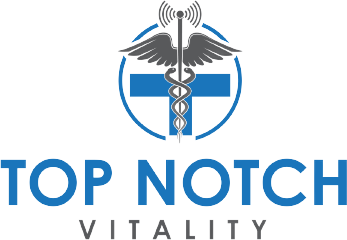Are you in search of effective skincare solutions to enhance your beauty and achieve flawless skin? Look no further than Top Notch Vatility. We specialize in providing top-quality peptide treatments in Dallas, tailored to meet your unique skincare needs. In this blog, we will explore the world of peptide treatment and how Top Notch Vatility can revolutionize your skincare routine. Get ready to unlock the secrets to radiant and youthful-looking skin!
Understanding Peptide Therapy
Peptide treatment in Dallas has become increasingly popular among individuals seeking non-invasive and highly effective solutions for their skincare concerns. Peptides, the building blocks of proteins, offer numerous benefits for rejuvenating the skin and combating signs of aging. At Top Notch Vatility, we harness the power of peptides to deliver remarkable results. Let’s delve deeper into the details.
The Science Behind Peptides
Peptides are short chains of amino acids that play a crucial role in various biological processes, including collagen synthesis and skin rejuvenation. When applied to the skin, peptides penetrate the surface and communicate with skin cells, stimulating collagen production and promoting a youthful appearance.
Customized Peptide Treatments
At Top Notch Vatility, we understand that each individual has unique skincare needs. Our team of experts specializes in creating customized peptide treatments tailored to address specific concerns. Whether you’re looking to reduce wrinkles, improve skin firmness, or enhance hydration, we have the perfect solution for you.
The Benefits of Peptide therapy Dallas
Peptide treatment in Dallas offers a wide range of benefits that can transform your skin and restore its natural radiance. Let’s explore some of the remarkable advantages of incorporating peptide treatments into your skincare routine.

- Reduced Wrinkles and Fine Lines: Peptides stimulate collagen production, which helps diminish the appearance of wrinkles and fine lines, resulting in smoother and more youthful-looking skin.
- Improved Skin Firmness and Elasticity: By boosting collagen and elastin levels, peptide treatments promote skin firmness and elasticity, reducing sagging and giving your skin a more lifted and toned appearance.
- Enhanced Hydration and Moisture Retention: Peptides help improve the skin’s ability to retain moisture, providing deep hydration and nourishment to keep your skin plump and supple.
- Brightened Complexion: Peptide treatments can help even out skin tone, reduce hyperpigmentation, and promote a brighter and more radiant complexion.
- Increased Skin Barrier Function: Peptides strengthen the skin’s protective barrier, shielding it from environmental aggressors and preventing moisture loss, ultimately enhancing the overall health of your skin.
- Accelerated Wound Healing: Certain peptides have been found to aid in wound healing by promoting tissue regeneration and reducing inflammation, making them beneficial for post-treatment recovery.
The Top Notch Vatility Difference
When it comes to peptide therapy dallas, Top Notch Vatility stands out as a trusted and reputable provider. We prioritize the satisfaction and well-being of our clients, offering an unparalleled experience. Here’s why you should choose Top Notch Vatility for all your skincare needs.
- Expertise and Experience: Our team of skincare specialists is highly trained and experienced in peptide treatments. With their expertise, you can trust that you’re in capable hands.
- Personalized Approach: We understand that skincare needs vary from person to person. At Top Notch Vatility, we take a personalized approach, tailoring our treatments to address your specific concerns and goals.
- Cutting-Edge Technology: We stay up to date with the latest advancements in skincare technology, ensuring that our clients receive the most effective and innovative treatments available.
- Client-Centric Experience: Your comfort and satisfaction are our top priorities. From the moment you step into our clinic, you will be greeted with a warm and friendly environment, ensuring a pleasant and enjoyable experience.
- Results-Driven Solutions: We are committed to delivering visible and long-lasting results. Our peptide treatments are designed to produce noticeable improvements in your skin’s appearance and overall health.
FAQs about Peptide Treatment in Dallas
- Can anyone undergo peptide treatment in Dallas?
- Yes, most individuals can benefit from peptide treatments. However, it’s best to consult with a skincare specialist at Top Notch Vatility to determine if peptide treatment is suitable for your specific skin concerns and condition.
- Are peptide treatments safe?
- Peptide treatments are generally safe when performed by trained professionals. At Top Notch Vatility, we prioritize your safety and follow strict protocols to ensure a safe and comfortable experience.
- How many sessions of peptide treatment are needed to see results?
- The number of sessions required may vary depending on your individual needs and goals. During your consultation at Top Notch Vatility, our experts will provide a personalized treatment plan, including the recommended number of sessions for optimal results.
- Is there any downtime associated with peptide treatment?
- Peptide treatments are minimally invasive and generally require little to no downtime. You can resume your daily activities immediately after the treatment, making it a convenient option for those with busy schedules.
- Are the results of peptide treatment long-lasting?
- Peptide treatments can deliver long-lasting results; however, the duration may vary depending on factors such as your skincare routine, lifestyle habits, and the natural aging process. Our experts at Top Notch Vatility will guide you on how to maintain and prolong the results.
- Are there any side effects of peptide treatment?
- Peptide treatments are generally well-tolerated, with minimal risk of side effects. However, some individuals may experience temporary redness, mild swelling, or sensitivity at the treatment site. These effects typically subside within a few hours to a few days.
Unlock Radiant Skin with Top Notch Vatility
With peptide treatment in Dallas offered by Top Notch Vatility, achieving radiant and youthful-looking skin has never been easier. Our personalized approach, expertise, and commitment to delivering exceptional results set us apart as a leading skincare provider in Dallas. Experience the transformative power of peptide treatments and discover a new level of confidence in your skin. Visit Top Notch Vatility today and embark on your journey to flawless beauty.




